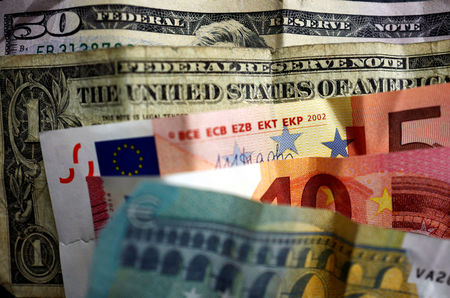
By Robert Harvey
LONDON (Reuters) -Oil prices edged higher on Monday as ongoing disruption to U.S. Gulf oil infrastructure balanced persistent demand concerns after a fresh round of Chinese data while investors await a likely cut to U.S. interest rates this week.
Brent crude futures for November were up 46 cents, or 0.64%, at $72.07 a barrel by 1207 GMT. U.S. crude futures for October rose 52 cents, or 0.76%, to $69.17.
The market is likely to remain cautious until the Federal Reserve makes its interest rate decision on Wednesday, said Phillip Nova analyst Priyanka Sachdeva, adding that prices are still supported by some supply worries given that some capacity remains offline in the Gulf of Mexico.
Traders are increasingly betting on rate cut of 50 basis points (bps) rather than 25 bps, as shown by the CME FedWatch tool that tracks fed fund futures.
Lower interest rates typically reduce the cost of borrowing, which can boost economic activity and lift demand for oil.
However, a cut of 50 bps could also signal weakness in the U.S. economy, which could raise concerns over oil demand, said OANDA analyst Kelvin Wong.
Saxo Bank analyst Ole Hansen, meanwhile, said activity is likely to remain light ahead of the Fed meeting, adding that the outcome “looks like a coin toss between 25 and 50 bps”.
Nearly a fifth of crude oil production and 28% of natural gas output in the Gulf of Mexico remains offline in the aftermath of Hurricane Francine.
Weaker Chinese economic data released over the weekend dampened market sentiment, with the low-for-longer growth outlook in the world’s second-largest economy reinforcing doubts over oil demand, IG market strategist Yeap Jun Rong said in an email.
Industrial output growth in China, the world’s top oil importer, slowed to a five-month low in August while retail sales and new home prices weakened further.

Oil refinery output also fell for a fifth month as weak fuel demand and export margins curbed production.
Brent and WTI each gained about 1% last week but remain comfortably below their August averages of $78.88 and $75.43 a barrel respectively after a price slide around the start of this month driven in part by demand concerns.
This post is originally published on INVESTING.


